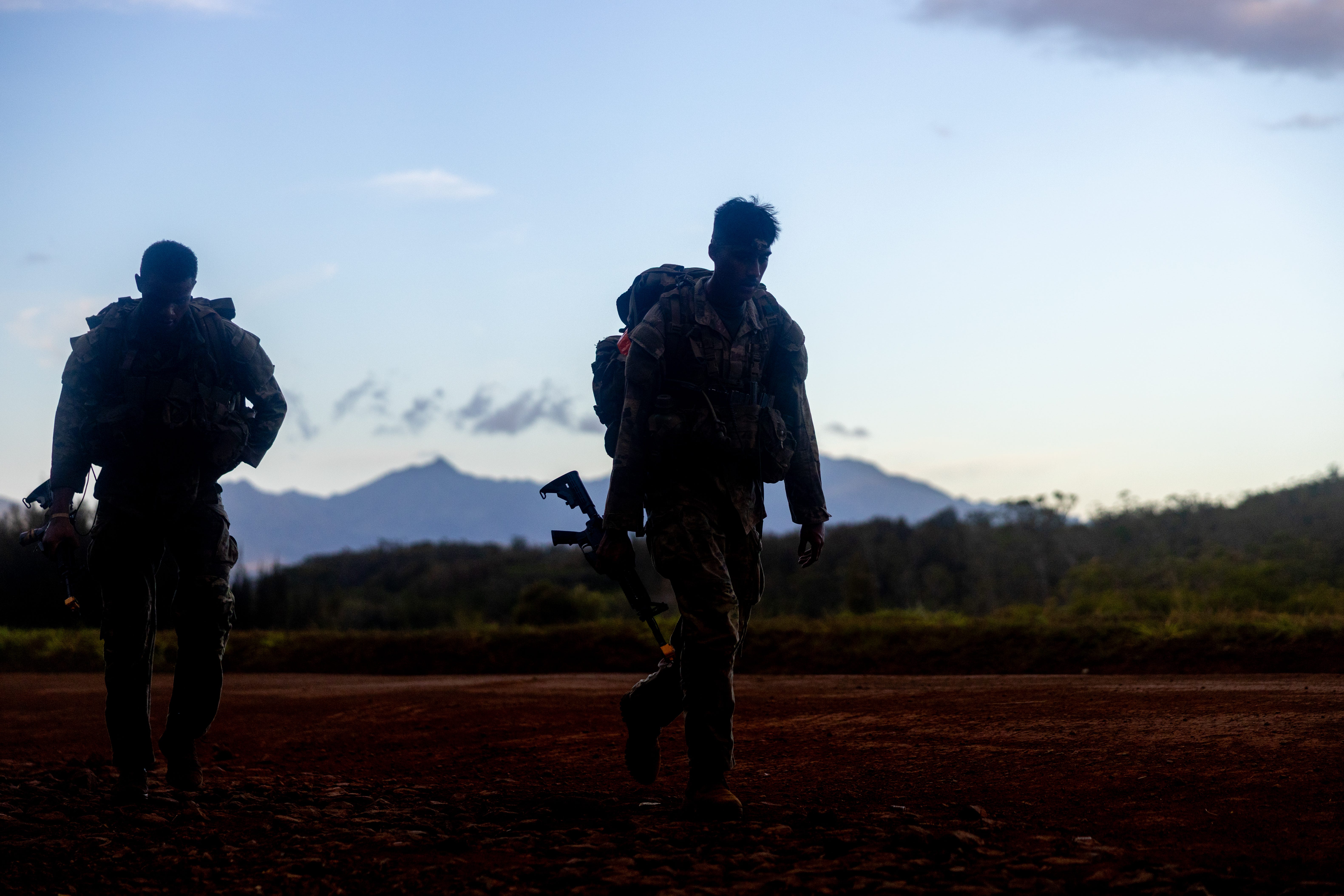
US Marine Corps photo by Lance Cpl. Samuel Estridge
- The US Army is starting to really prioritize integrating drone technology into the force.
- But not every soldier needs one, a commander argued this week.
- These systems can be enablers, he said, but they can also be overwhelming.
When it comes to fielding drones in the US Army, one commander said giving too many to soldiers could be overwhelming.
While Army leadership has been pushing new drone technology, much of the learning — including how many drones small units can realistically handle — is happening on the fly.
At the Association of the US Army’s annual event in Washington, DC, this week, Col. Dave Lamborn, commander of the 2nd Mobile Brigade, 25th Infantry Division in Hawaii, said there’s an upper limit on the “number of devices to field out to tactical formations.”
There has been a lot of discussion about getting enablers, like drone tech, down to the squad level. “I certainly want to enable squads, but I also don’t want to encumber squads,” Lamborn said. “There’s enough stuff for these guys to do.”
A squad leader, for example, would end up with even more responsibilities, while fire teams could wind up managing devices instead of leading their riflemen. Soldiers already juggle plenty of gear, like night vision, thermal optics, radios, and weapons, that demand constant attention, Lamborn said.
The lowest level that Lamborn envisions using drones is the platoon, which is composed of more soldiers than squads that are more capable of handling drone operations without it becoming a burden.
Drone distribution isn’t just about workload, he added. It’s also about key resources, such as batteries, charging stations, spare parts, 3D-printing gear, and power generation. Each adds a new layer of logistical hurdles to overcome.
By limiting that distribution, Lamborn said, he can better tackle those resource demands, “which prove to be a great challenge for us in a jungle environment, quite frankly,” back a bit.
Brig. Gen. Travis McIntosh, the deputy commanding general of the 101st Airborne Division out of Fort Campbell, Kentucky, raised similar concerns. “Now, how many can you effectively employ?” he asked. “Do I bring ammunition on the helicopter, or do I bring batteries on the helicopter?”
Those limits may change with time though. When the technology advances, the number of drones a unit could handle might be “unlimited,” he said.
The Army is still figuring out how to make small, cheap drones work in the real world. In the Indo-Pacific’s heat and humidity, for instance, keeping them operational is a challenge. The 25th Infantry Division has taken a leading role in testing, especially with small drones and 3D printing gear.
Across the US Army, soldiers are learning to build, fix, and fly uncrewed aerial vehicles and even conduct drone-on-drone kills as the service and the broader US military embrace drone warfare. Many of these lessons draw from the war in Ukraine, and close work with industry partners has created an iterative feedback loop between soldiers and drone developers.
There are some growing pains, though, including a shortage of soldiers with the specialized skills needed to operate drones, conduct electronic warfare, and manage other tech the Army sees as critical for future wars.
Read the original article on Business Insider
The post The US Army’s drone surge has limits. A commander says more tech isn’t always better. appeared first on Business Insider.




